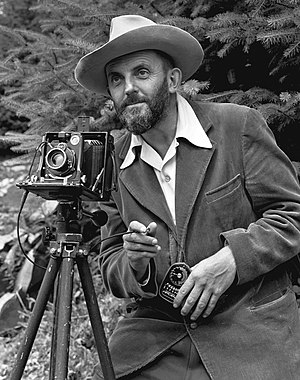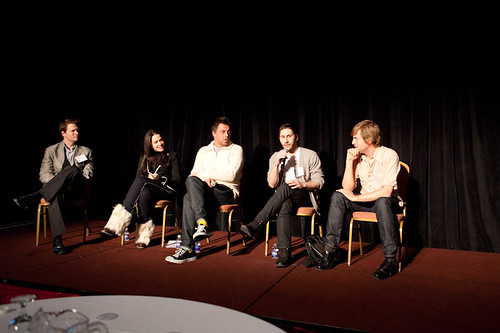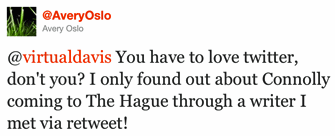Ansel Adams and Edward Burtynsky: Constructed Landscapes

Tailings #30, Sudbury, Ontario, 1996, by Edward Burtynsky
I’ve just returned from the Shelburne Museum where I spent a couple of air conditioned hours soaking up Ansel Adams and Edward Burtynsky: Constructed Landscapes. Are you nearby? See it. Are you far away? It’s worth the trip! Seriously, this exhibition is that good.
I’d love to pass along some of the stunning photographs, but an enthusiastic security guard cum docent spent about five minutes explaining to me that strict copyright rules prevented me from snapping any photographs. Fair enough. But if you follow the link above to the exhibition you can see some great images including the one I’ve included here and “Winter Sunrise, Sierra Nevada from Lone Pine, California” which I included in my last Ansel Adams post.
So, until you meander over to the Shelburne Museum’s Webb Gallery, you’ll have to rely upon my words. Or perhaps not rely upon, since the verbal journey you’re about to experience is impressionistic and highly subjective. Consider my stream of conscious reflection less review, even less blog post than a composite Ansel Adams and Edward Burtynsky twitter stream…
Data Stream: Ansel Adams & Edward Burtynsky
You with me? When the guard welcomed me into the exhibition and then launched into his routine about why photography was prohibited, I asked if I could tweet my way through the photographs. He wasn’t so sure about this Twitter business, but he agreed. Victory! Or not. I quickly discovered that the Webb Gallery is a “zero bar” Verizon black hole. Strong signal outside, but zilch inside. So, I resolved to jot my Ansel Adams / Edward Burtynsky impressions on my Blackberry to post later. Here’s the soppy mess with a few links, etc. added in for good measure.
Spectacular photo: “Dunes, Hazy Sun, White Sands National Monument, New Mexico” of wild grass, yucca and a dead shrub drowning in cascading sand. (Tiny version of this the The Art Institute of Chicago’s website.) What’s grabbing me here? Nostalgia? Yes. I’ve been there. Envy? Sure. I’ve shot hundreds, maybe thousands of images at White Sands National Monument, influenced like millions of others before me by the photographs of Ansel Adams. Humility is good. But there’s something more. The tonal range is impressive. The totally pedestrian subject and framing adds to the mysterious appeal.
And another, “Forest, Early Morning, Mount Rainier National Park, Washington” presents three layers of visual story telling:
- In the foreground, black silhouetted coniferous trees march left to right across the entire bottom of the image. Small, uniform shrubs at left grow larger and more detailed as they near the bottom right. This is a diminutive vignette, never taller than about 20% of the image.
- The middle band, occupying nearly half the height of the image captures two jagged mountain peaks like portraits. Shear angled stone faces, some portions veiled in snow.
- Above the mountains contrast-rich clouds drift nebulous and taunting, part steam engine blast, part crumbling doily.
The three layers of the image coalesce, but just barely as if the photographer is conflicted about his subject. Or triplicitous.
I am drawn into Ansel Adams’ “Tenaya Creek, Spring Rain“, the movement (and sound) of icy water riffling over stones and around boulders in the shallow creek bed. The textures — of the pebble beach, of the cedar trees’ bark, of the diversity of leaves — beg me to touch the print, to run my the pads of my fingers over the various surfaces. I restrain myself. Glass will restrain those who can’t resist. I yearn for half an hour, even fifteen minutes in this place. With my fly rod. With my Labrador Retriever, Griffin. With no mobile phone, no twitter, no appointments missed or pending, no urgencies at all.
Other favorites include Ansel Adams’ “Aspens, Northern New Mexico“, “White Branches, Mono Lake, California”, “BridalVeil Fall” and “Trees and Cliffs“, the latter cropped compellingly if slightly unconventionally. It seems to be off kilter, and a branch reaching into the top of the image suggests a tree falling out of celestial nothingness. Two trees (perhaps sequoias?) roughly divide the image and the asymmetrical massing of the stone mountains behind contribute to an effect furthered by the wispy clouds which radiate away from the center of the image. An eruption. An uprising. A rocket.
I remember studying Ansel Adams’ zone system. I remember frustration. Then amazement. “Dunes, Oceano, California” coerces me to linger while I trace the contours of the dunes, blur the wavy surface of the sand like a zebra in motion Laughing. Then lying down to rest. With the sun dropping nearer to the horizon.
Ping Pong: Ansel Adams & Edward Burtynsky
A sort of emotional schizophrenia ping-ponging back and forth between Ansel Adams and Edward Burtynsky: black and white, color; small prints, large prints; pristine, untouched nature, nature transformed by industry.
A dramatic Edward Burtynsky photograph, “Shipbreaking #24, Bangladesh, 2000″, showcases a cross section of a dismantled ship. A slice of steel vessel still bearing the name Kingfisher painted on the hull. The caustic pallet of hazy, pale blue and orange is unsettling, disturbing. I find myself wondering about the chemicals saturating the mudflats upon which ship carcasses are strewn in various stages of butchery. I worry about the health, the safety of the half dozen laborers who stand near the hulking Kingfisher. Smoke or exhaust lingers in the air. What is burning?
Burtynsky’s “Densified Oil Drum#4” intrigues me as much for the title as the stack of compressed steel drums. They remind me of clothes and rags packed into cubes, so untrained is my eye to seeing cylindrical steel drums so totally distorted, compressed, densified. So many colors of paint, crumpled, chipped paint homogenized by the patina of orange rust which — together with the geometry of the cubes stacked with some sense of order — unifies so many parts into a whole. Not an accident of industrial waste. Not a practical side effect of recycling. But a post industrial igloo, perhaps better suited to a globally warming world. And “Nickel Tailing #5” offers an even more colorful, even more dramatic, even more alarming refrain to Burtynsky’s anthem. It’s disheartening and defeatist from where I stand. Alone. In a cold gallery. Torrid July weather awaiting me outside.
Scenery is for Profit, Nature is for Reverence
As I wrap up, I reread one of many quotations printed on a wall:
“Scenery for Adams is a dirty word, an invention of the tourist business, an oversized curio. Nature is something else. Scenery is for profit, Nature is for reverence, and the fewer tracks of man there are in it, the better.” (Wallace Stegner’s foreword to “Ansel Adams Images, 1923-1974”)
This is a familiar notion. And an unmistakeably potent underlying theme in Ansel Adams and Edward Burtynsky: Constructed Landscapes. But it’s not the only theme. I’ll wait for you to help me unwind some of the others. Now I’m going to dive into the two delicious books I purchased before departing the Shelburne Museum: Ansel Adams: 400 Photographs and Manufactured Landscapes: The Photographs of Edward Burtynsky
.
Related articles
- Ansel Adams and Edward Burtynsky (virtualdavis.com)
- The Creative Process of Ansel Adams Revealed in 1958 Documentary (openculture.com)
- Edward Burtynsky – manufactured landscapes (migrantstreet.wordpress.com)
















